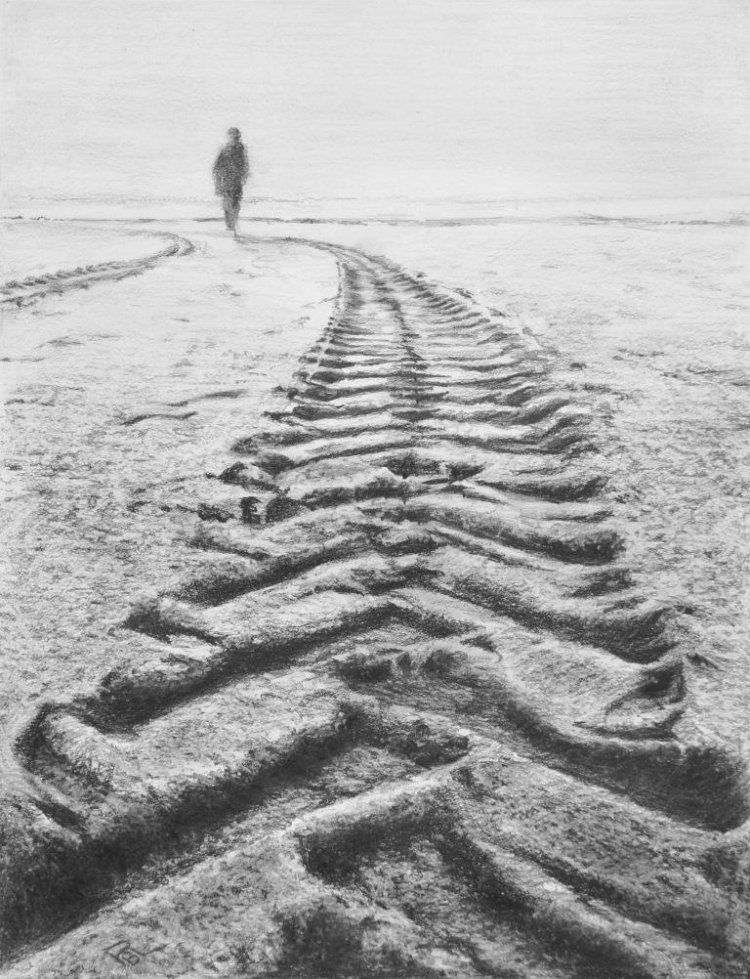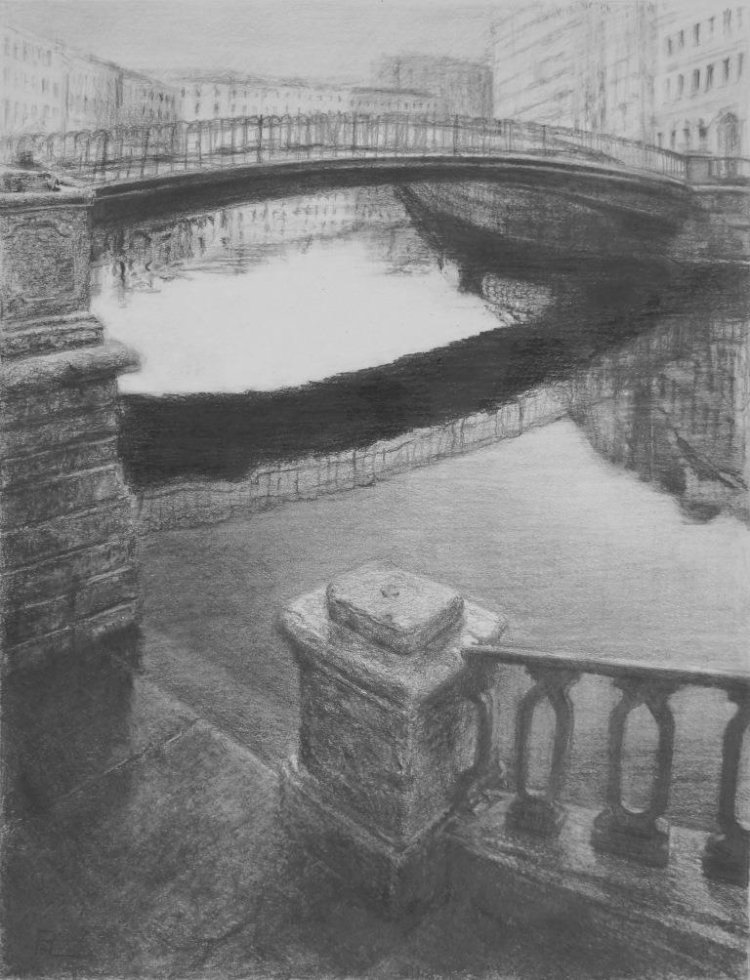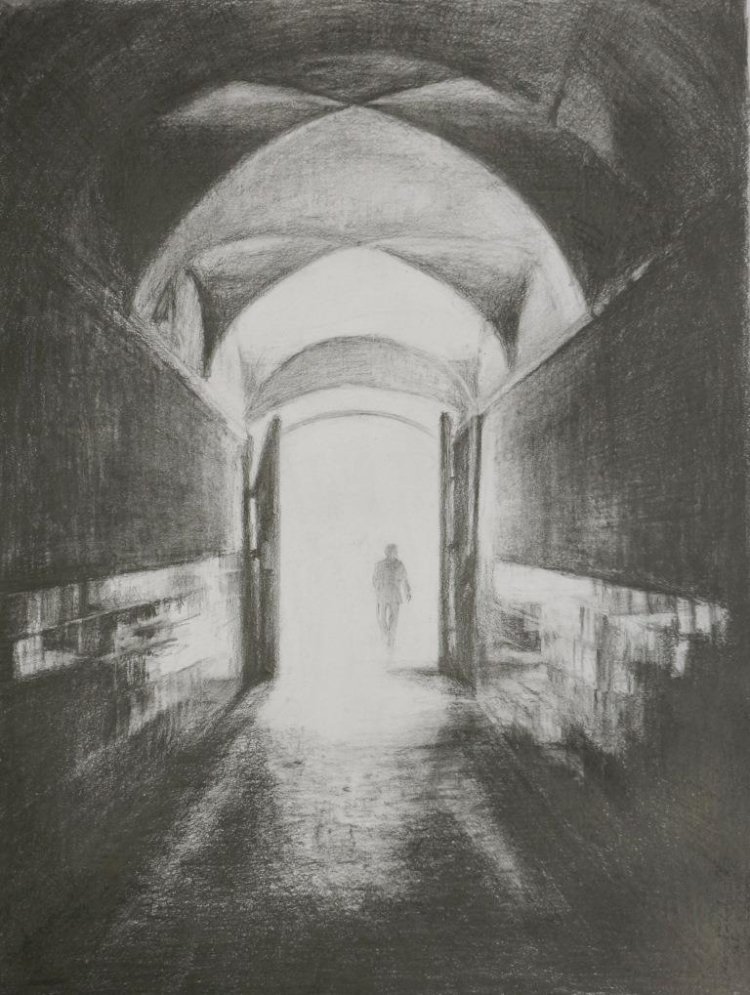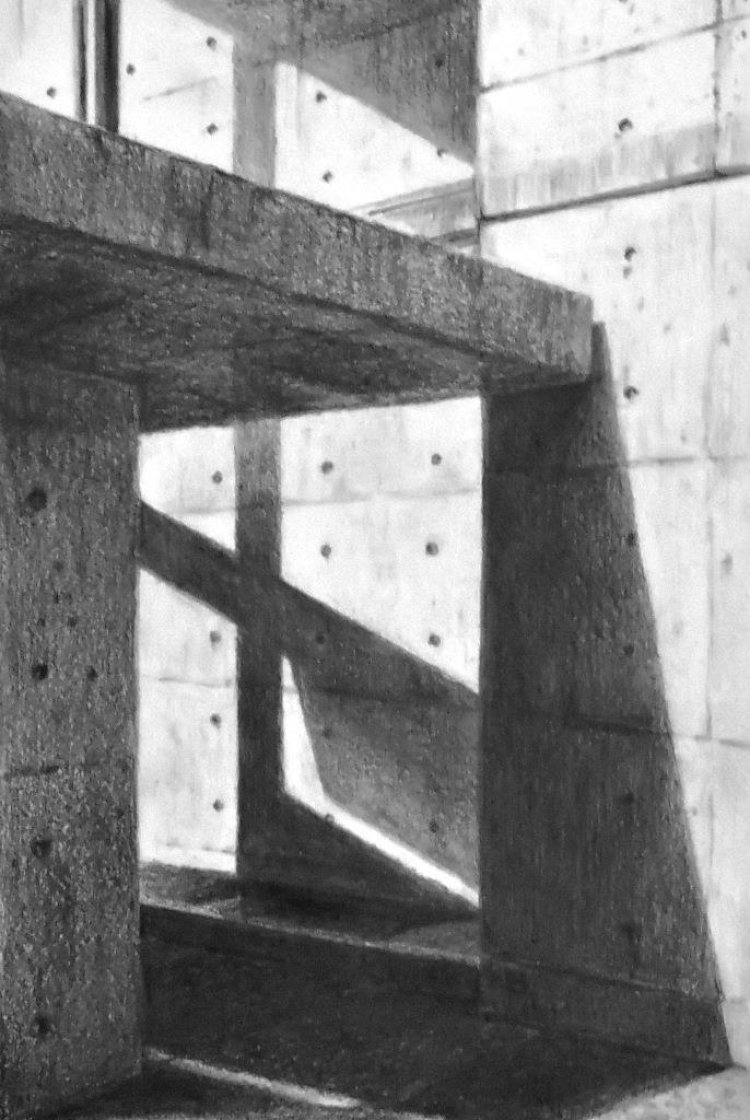Art from the Shelter: A Journey of Survival and Expression
How artist Rose Bar Noor turned her post-tragedy seclusion into powerful art. In her latest exhibition, she shares the story behind her evocative paintings.
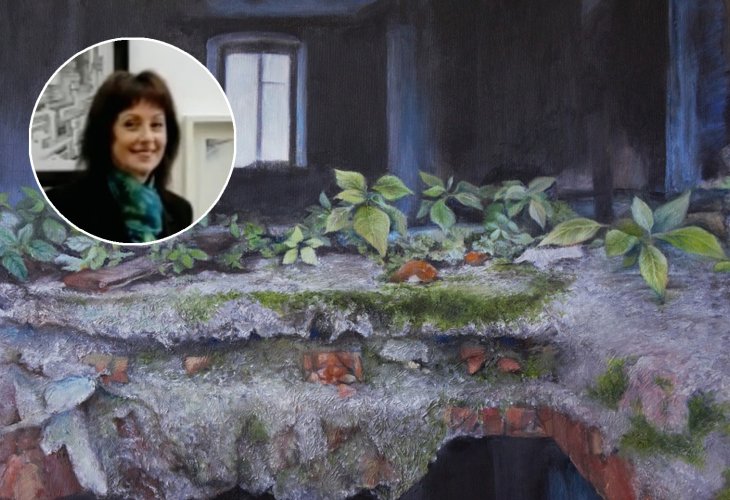 (Inset: Rose Bar Noor)
(Inset: Rose Bar Noor)Anyone viewing the paintings of Rose Bar Noor at the 'Global Art' gallery in Tel Aviv might sense the intense story they conceal. It's no accident that many of them are painted in black and white, filled with silhouettes and mystery. Rose created these while confined in a safe room after the tragic massacre that claimed the lives of her in-laws from Kibbutz Kfar Aza. She included this series in an exhibition drawn from the depths of her heart, depicting her profound inner feelings.
A Big Dream from a Little Girl
Rose's journey in art began during her childhood in Ukraine. She painted tirelessly, unaware that her art would accompany her throughout her life and symbolize her experiences in Israel during incredibly challenging times.
At the age of 13, Rose immigrated to Israel with her family. Within days, she found herself in a new primary school, not knowing the language, surrounded by strangers. "The teacher handed me blank papers, a pencil, and math exercises which I solved in minutes," Rose recalls. "With nothing else to do, I began drawing imaginary characters. During recess, I was surprised when kids approached, tried to converse, and watched my drawings. Though I didn't understand Hebrew, through hand gestures, they requested I draw similar characters for them. From there, we moved to drawing flowers, animals, and cars, establishing an unexpected form of communication between us. That's when I realized art was a wonderful means of communication, even without words."
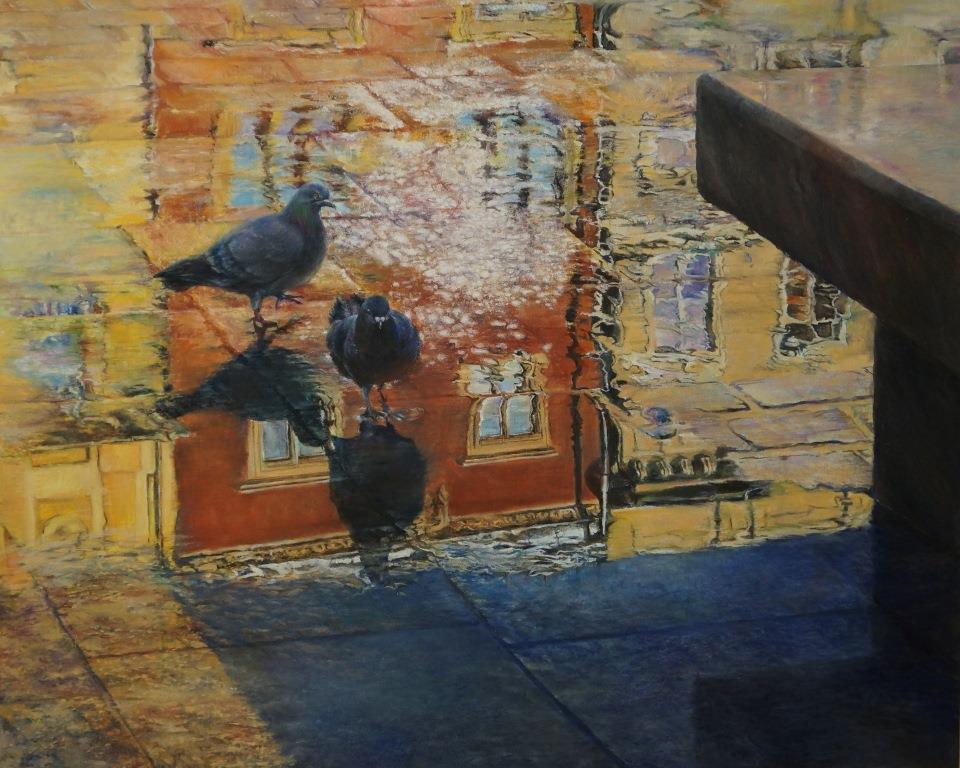
Rose married and started a family, with art and architecture accompanying her every step. "Everything I experienced, I documented and painted, whether the landscapes of Israel I love so much, or the people and characters closest to me. I'm very connected to daily reality, both in content and forms that inspire me."
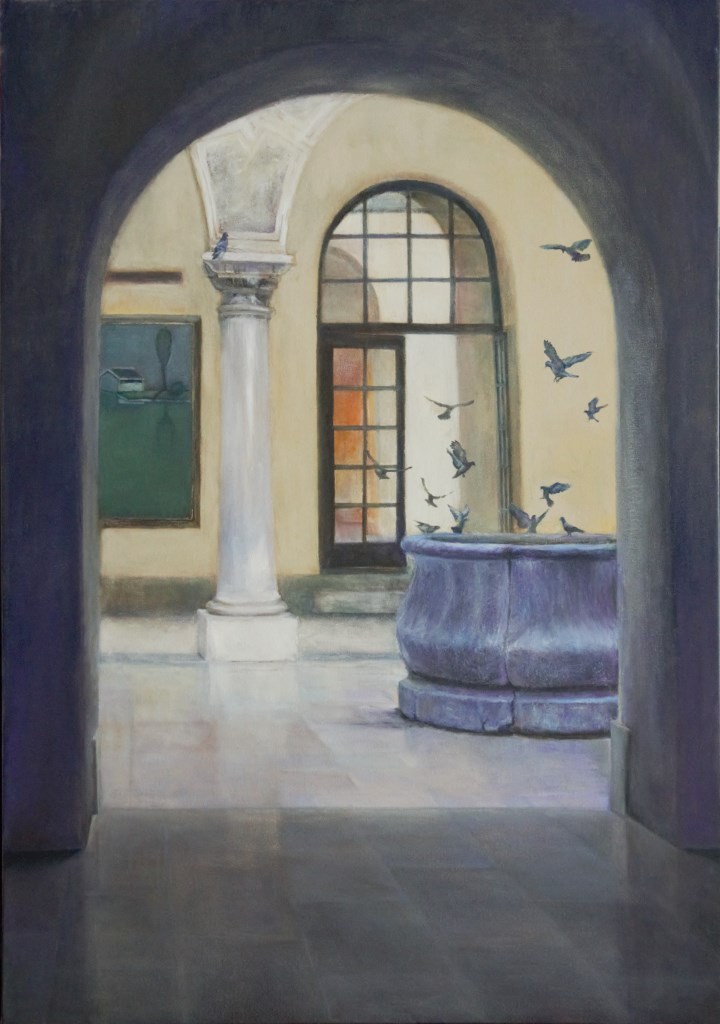
Painting from the Shelter
During the COVID-19 pandemic, Rose continued expressing her feelings through art. During the first lockdown, the isolation of the elderly challenged her brush. "I saw a photo of children visiting their grandparents, standing beneath a building while the grandfather lowered a gift with a rope from the window. Of course, I couldn't ignore such a scene. In another instance, neighbors were singing in a shared performance from their balconies. I transferred these impressions into my paintings."
Observing Rose's paintings, one cannot ignore her use of light and shadow. "Living in the South," she explains, "I experienced many alarms. Each time we sheltered in the safe room, I painted dark images with light and shade. The security situation was a direct inspiration for much of my work."
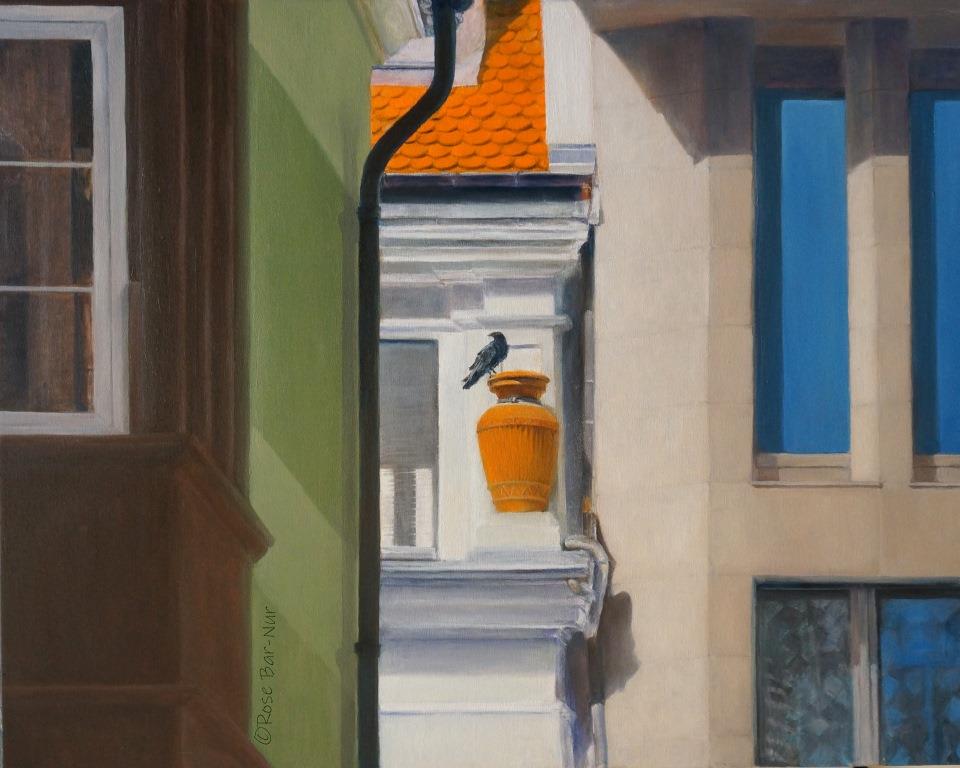
Sandy Said Not to Worry
Taking a deep breath, Rose reflects on the events of Simchat Torah. "That morning, I spoke with Sandy; she mentioned there was an attack but assured me they were in their shelter. Later, I sent a video showing how to lock the shelter without a lock, but she didn't respond."
"In the following hours, I was in contact with my daughter-in-law, Sandy's daughter, who shared that her parents were still missing. We accompanied her to file a police report, and searched everywhere, but after a week, we faced the worst."
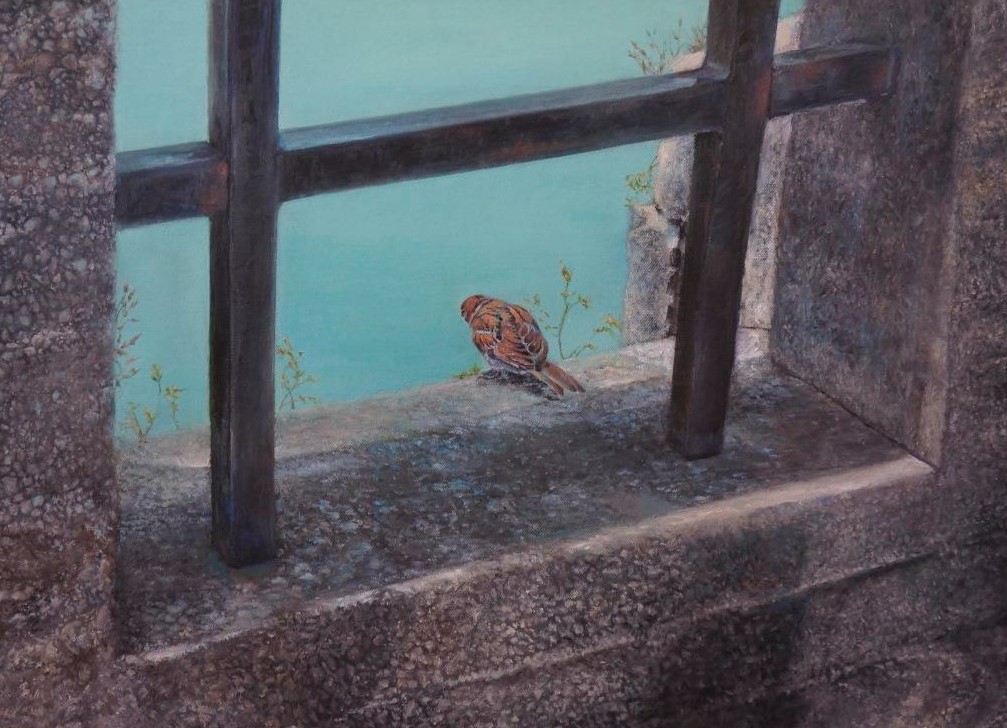
Rose's life and work changed forever afterwards. "I stopped painting for several months—a first in my life," she confesses. "I simply couldn't. Sandy's daughter, our daughter-in-law, sat shiva, and we stayed with the grandchildren, listening to stories and crying. Words can't capture the tragedy or the loss—our grandchildren will grow up without their wonderful grandparents."
"I couldn't return to my usual pursuits or painting. Yet, after months, the need to express myself became overwhelming. Gradually, I resumed painting, this time without human figures or with figures entwined and blurred; they seemed to be leaving or returning. This process allows me to express my longing and desire to reach someone so far away. Today, most of my drawings are pencil-based, as I cannot bear to capture the colorful, joyous world while carrying so much pain inside."
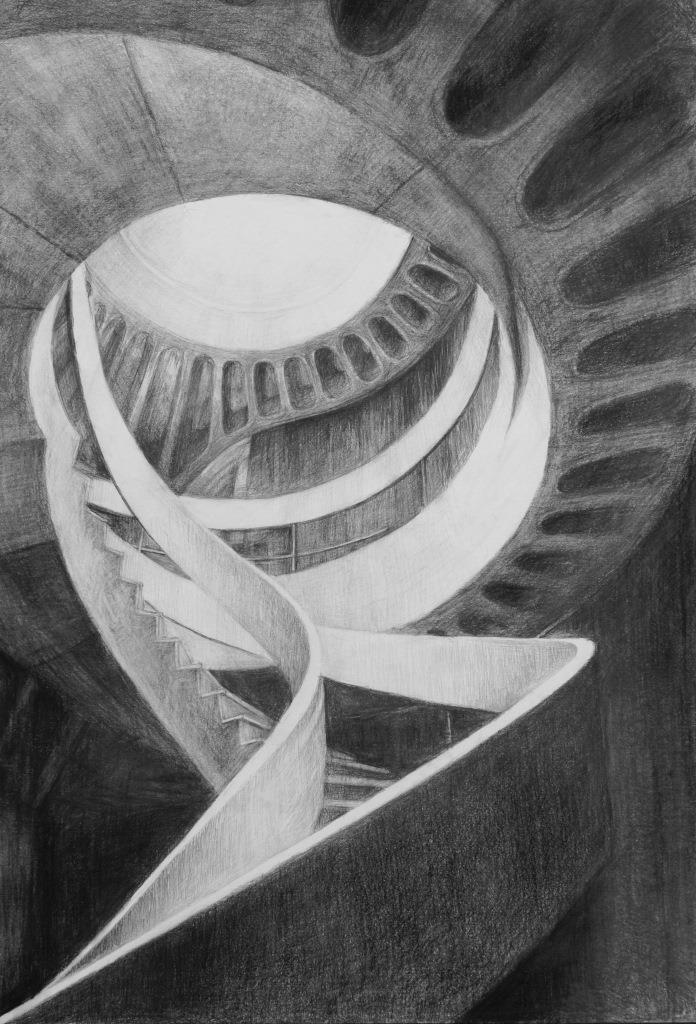
"It may seem that way, but it's not entirely accurate. I've learned to notice miracles amidst the harsh events. For example, one of Yigal and Sandy's daughters was supposed to sleep over that night, but because the bed broke and no sofa was bought, she returned home safely. Coincidentally, my son's baby daughter was set to stay with them, but she wouldn't fall asleep, so her mother brought her back."
"As I've mentioned, the figures in my drawings appear blurry and fading, yet closer inspection reveals they are also returning. Those examining my work deeply will feel they convey not just sorrow, but much hope as well."
